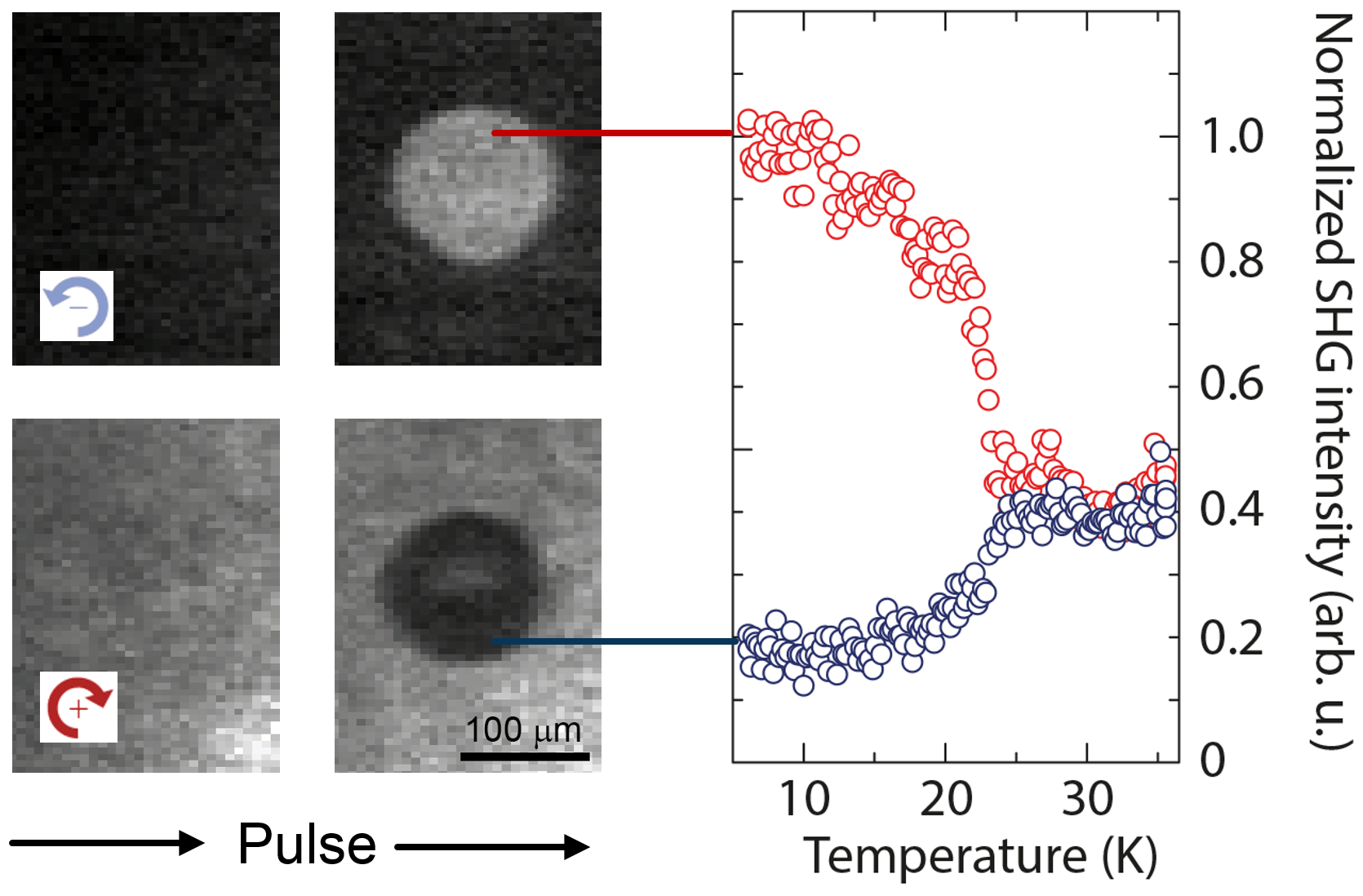Reversible optical switching of antiferromagnetism in TbMnO3
Antiferromagnetism is magnetic order, yet without a macroscopic magnetization as in iron. The absence of the field has interesting technological potential, but it also makes the antiferromagnetic state harder to control and set in a certain direction. Light, however, can do this if antiferromagnets from a special class of materials called multiferroics are selected.

Magnetic materials are used in manifold ways: power generators, sensors and computer data storage are just a few examples. Controlling the magnetic state of a device is relatively laborious. An electric current has to flow through or at least close to it and generate a magnetic field that acts on the magnetization of ferromagnets like iron or nickel. This costs energy and poses a technological challenge. Current-less remote-control of magnetism with light is therefore explored as an alternative.
But how about magnets not carrying a macroscopic magnetization? These materials are called antiferromagnets. They represent the dominating form of magnetic order in nature and play an important role in devices like hard disk read/write heads. They cannot be controlled by magnetic fields, however, and optical remote-control seems even less likely.
A team led by the Laboratory of Multifunctional Ferroic Materials at ETH showed that such optical control is nevertheless possible. This discovery rests on three ingredients. First, the ability to literally see the antiferromagnetic state by a special, laser-frequency-doubling optical process called second harmonic generation. Second, coupling of the antiferromagnetic state to an electric polarization which is found in a class of materials called multiferroics. Third, a way of patterning the samples such that the antiferromagnetic order can be switched back and forth by differently coloured light beams.
This is described in a recent article in external page Nature Photonics. The work is a good example for the interesting new route the field of multiferroics, compounds uniting magnetic and electric order, is taking. The focus on the multiferroic order as such is replaced by an interest in functionalities resulting from it, like reversible optical control of antiferromagnetism in the present case. This shift of focus is reviewed in another recent work from the Laboratory of Multifunctional Ferroic Materials that was published in external page Nature Reviews Materials.
- S. Manz, M. Matsubara, Th. Lottermoser, J. Büchi, A. Iyama, T. Kimura, D. Meier, M. Fiebig, Reversible optical switching of antiferromagnetism in TbMnO3, Nature Photonics, external page DOI:10.1038/nphoton.2016.146
- M. Fiebig, Th. Lottermoser, M. Trassin, D. Meier, The evolution of multiferroics, Nature Reviews Materials 1, 16046 (2016), external page DOI:10.1038/natrevmats.2016.46
- Laboratory of multifunctional ferroic materials
- ETH News: English, Deutsch